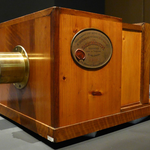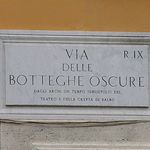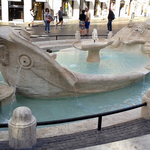Esquilino
One of the seven hills of Rome which is remained not so much populated and not safe for a long time mostly because of the wide necropolis that were extended in the area since the hill was destined to be a cemetry of the slaves in ancient Rome.
August improved it inserting it in the town plan of the Imperial Rome and turned it into a blooming residential area of parks, orchards, relaxing oasis far from the clamour of Forums.
Maecenas ordered his large villa to be built here. Virgil and Horace lived there as well.
One of the three tops of the Esquiline hill is the Opium hill "Mons Oppius", which is the Oppio park nowadays and the most verdant part of the Esquiline. Almost on the top of the hill the ruins of Neron's Domus Aurea,the Tito's and Traiano's baths are spread out.The Neron's Domus Aurea completely restored by nowi s much more magnificent than one can imagine as the park which includes about 2.500 sorts of rose with a splendid fountain and terraces with beautiful views.
The origin of the name Esquiline would derive from the inhabitants of the Opium Hill considered to be a suburb of Rome in that time.
These inhabitants in contrast to the inhabitants of the so-called town named inquilini , were called exquilini"living beyond". Later this name was extended for the whole hill.
But according to other points of view the name would derive from the presence of holm-oaks on the hill (exculi).
With the end of the empire the Esquiline fell into decay and in the Middle Ages only magicians, witches and necromancers climbed onto the hill.They changed the hill into the place where mysterious and cruel rites were celebrated.
Almost on the summit of the hill, 55 meters high, Basilica di Santa Maria Maggiore is located.It is connected to Basilica San Giovanni in Laterano by a straight stretch traced by Pope Gregorio XIII (1572-85),
that is Via Merulana,so called after the ancient family of Meruli which had their residence here.
In the centre of the Santa Maria Maggiore square a big grooved column of greek marble stands. It is 14,80 meters high and only one of the 8 remained columns from the basilica of Maxentios. It was set
on a high base adorned of the eagles and dragons of Paul V in 1613-15.
Moderno crowned it with the bronze statue of the Virgin with The Child created by Guglielmo Berthelot and put a fountain at the foot of the statue.
The completion of the work belonged to pope Sixtus V (Felice Paretti) which got to recreate the Esquiline Hill in 1587 by setting the Piazza dell' Esquiline and restored Piazza di Santa Maria Maggiore .The last one is the point of departure or arrival of one of the longest and straightest streets of Rome.That is Via Felice which from the church Trinità dei monti brings to the square across the streets named nowadays Via Sistina, Via delle Quattro Fontane and Via De Pretis.
In the centre of the square an ancient egyptian obelisk of 14,80 meters is set up. It ornated the entrance of the Mausoleum of Augustus as well as its twin in the Piazza del Quirinale.
Sixtus V gave an order to Domenico Fontana to put it up in 1587.
The obelisk with its base reaches the height of 25,50 meters.
For a few years the Esquilino became the center of the religious tourism up to the end of 800. After the austere bureaucrats got down from Turin followed by the royal government of Vittorio EmanueleII
it became piemontese, quarter. All the streets' names were changed for Via Cavour, Via Carlo Alberto, Via Principe Amedeo etc.
But when the fresh sea breeze came and found itself on the hill the Esquiline also became again "Roman".
The area of the Esquiline is the arrival point of Rome who reaches the city by train at the principal railway station named the Termini Station.
Besides the church of Santa Maria Maggiore there are a great deal of churches worth to be mentioned, among which are San Pietro in Vincoli, Santa Prassede e
San Martino ai Monti.

 The records of Rome. Big numbers, not always enviable, for a big city.
The records of Rome. Big numbers, not always enviable, for a big city. New Phot-O-Matic section. To spend some time looking at photos (also) of Rome.
New Phot-O-Matic section. To spend some time looking at photos (also) of Rome. The administrative, urban, toponymic and imaginative subdivisions of Rome.
The administrative, urban, toponymic and imaginative subdivisions of Rome. Notice for tourists: in Rome you drink for free. Historical fountains and 'big noses'.
Notice for tourists: in Rome you drink for free. Historical fountains and 'big noses'. Free museums return on the first Sunday of the month.
Free museums return on the first Sunday of the month.